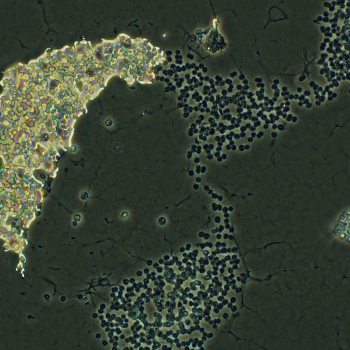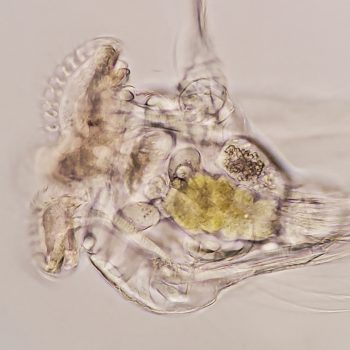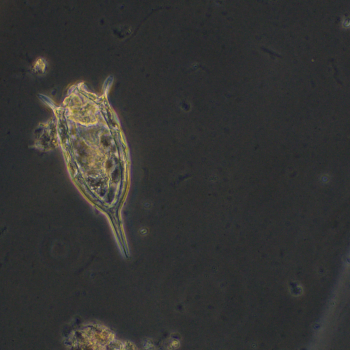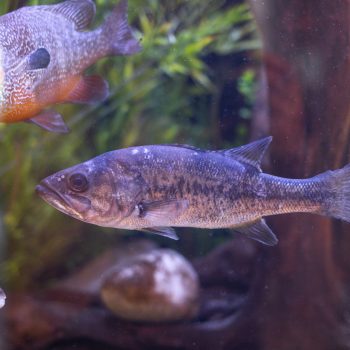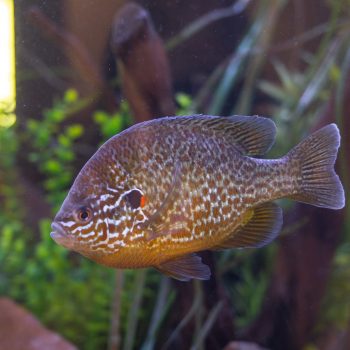Love your lake? Here’s what you need to know about its ecosystem.
When an organism fits seamlessly into its ecosystem, it is considered native.
For example, monarch butterflies consume milkweed as caterpillars and then consume nectar and disperse pollen as adults. Shelf mushrooms live on the sides of decaying wood and assist in breaking down the dead tree into energy and nutrients. Opossums eat anything they can easily put in their mouths, especially ticks. Bass, perch, bluegill and sunfish populate local lakes and snack on zooplankton and sometimes smaller fish.
All of these species are native to northern Indiana and are important parts of lake ecosystems!
In short, every native organism has a niche and every niche exists on a level of the ecosystem. Here are some examples of the four broad levels of lake ecosystems, starting with phytoplankton (which are fed by nutrients.)
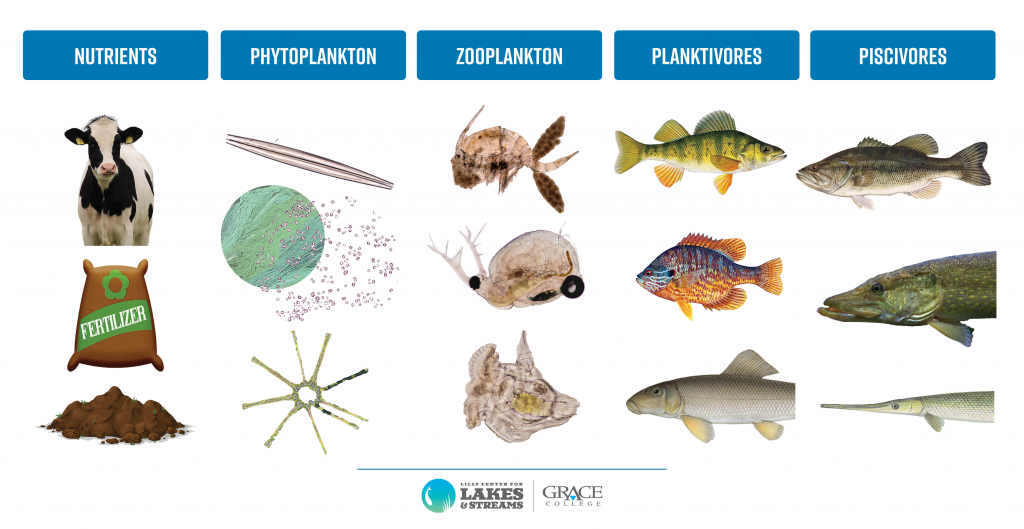
The primary producers (phytoplankton)
Producers comprise the base of the food chain. They take energy from the sun, or natural chemical processes, and use it to make energy.
Many producers, like trees and duckweed, do not actively move. Some, like cyanobacteria (known as blue-green algae) move up and down but not much more. Sometimes, though, there are producers that are truly mesmerizing to watch.
One the Lilly Center team has observed under a microscope is called a euglenoid, pictured on the left. Its name means it is “like a euglena.” Euglena are microscopic free-swimming organisms that, in this case, use photosynthesis to gain the energy to swim in their graceful spiral motion.
Another type of producer is blue-green, pictured on the right. Like other kinds of algae, blue-green algae blooms and can cover the surface of a lake. Unlike other algae, blue-green algae is actually a kind of bacteria that can produce a toxin called microsystin.
The little consumers (zooplankton)
There are countless kinds of zooplankton!
They are fundamental to a lake ecosystem because they serve as food for other growing organisms, like fish. Zooplankton are also excellent indicators of the health of the water they live in. As the Environmental Protection Agency (EPA) describes, “The effects of environmental disturbances can be detected through changes in species composition, abundance and body size distribution.”
Below is one of our favorites: the rotifer.
The best way to envision a rotifer is as an itty-bitty lake Roomba. Rotifers swim around at high speed using their tail (or tails) as a paddle and their mouth as a vacuum, hoovering up algae and tiny protozoa as they go along their busy microscopic lives.
The big consumers (planktivorous and piscivorous)
Anything that moves and can be seen with the naked eye consumes other organisms, too. This group of consumers is likely the most well-known group, as it contains everything from smallmouth bass to crawfish and even to mussels (though typically not zebra mussels). Big consumers are often specialized in how and what they eat, with some having large mouths to easily scoop up small fish and others with down-facing jaws used for sucking up meals of algae and invertebrates.
The decomposers
This group is diverse and pretty hard to find. They do the dirty work of converting feces, dead organisms and other detritus into energy and nutrition for themselves and those that eat them. Although these little creatures often go unnoticed, they are always there, doing the job we are so glad we do not have to do.
Every level of a lake’s ecosystem does a unique and important job in protecting and prolonging native species and the habitats they live in. There’s a direct benefit for us, too: When the lakes are healthy, so are property values, family memories, local businesses, farms and more.
How does a lake ecosystem change over time?
Aging is a natural process ─ in both humans and lake ecosystems! Although they do not retire from a full-time job or grey hair, lakes and their inhabitants change in several ways while aging. Our actions can either speed up or stabilize the process.
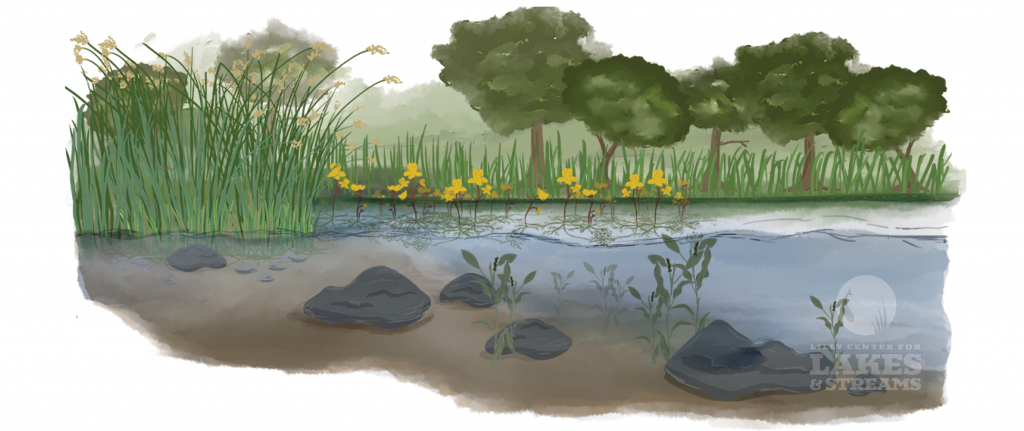
An oligotrophic lake is a young lake ecosystem that tends to have clearer water, minimal plant growth, less mucky sediment at the bottom, and fewer large producers like fish. Fewer nutrients are in the water, which means there is less algae and weeds.
Oligotrophic lakes tend to be deeper and therefore colder than older lakes. Cold water also holds more dissolved oxygen than warm water, so the ecosystem is perfect for fish species that prefer this kind of chilly, highly oxygenated water.
An oligotrophic lake is oxygen-rich but has too few nutrients to support many forms of life. Even so, the dissolved oxygen is used in plant and algae production. As the plants and algae decay, sediment slowly builds in the bottom of the lake. It is broken down by bacteria, which also use dissolved oxygen.
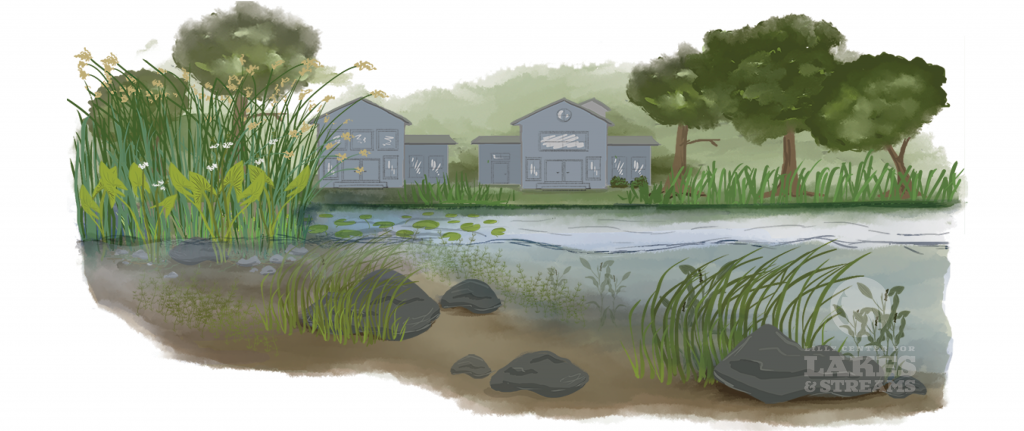
A mesotrophic lake is a middle-aged lake ecosystem that is fed more nutrients and has greater plant production. Sediment accumulates on the bottom, which makes the lake shallower and warmer overall. More algae is produced because of the increased nutrients, which can lead to a less-clear lake with a greenish tint.
But that does not mean the lake is unhealthy!
The ecosystem of a clear lake (like an oligotrophic lake) has fewer weeds and plants, but it also has a limited food web and few aquatic organisms. A healthy, balanced mesotrophic lake is home to a wide variety of fish, crustations, reptiles, plants and more.
The ecosystems of many lakes in Kosciusko County are mesotrophic. They are home to bluegill, sunfish, perch, catfish, bass and more. They are also known for turtles and crayfish. Mesotrophic lakes are shallower than oligotrophic lakes, though, so they host fewer cold water fish. More plants are visible, too.
In a mesotrophic lake, dissolved oxygen is used and produced by virtually every form of life in the lake, from producers to decomposers. If the production of dissolved oxygen is outpaced by the use of dissolved oxygen, a lake ecosystem will slowly tilt toward eutrophication.
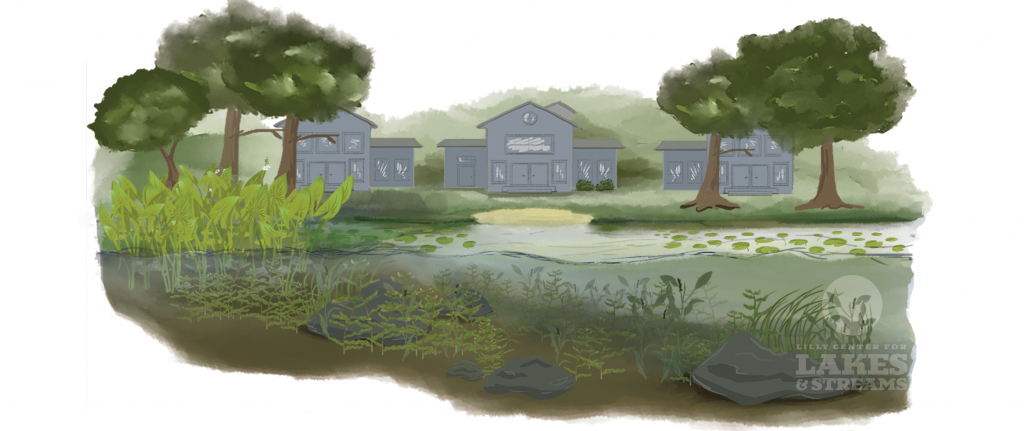
A eutrophic lake is an old lake ecosystem that typically holds shallow, murky water. The shallow water is warmed more easily by the sun. It also produces more plant growth and algae. The lake is in the process of filling itself in with sediment (like decaying leaves, organisms and aquatic plants) and will eventually become home to many types of wetland plants and animals.
For a while, a less-eutrophic lake might hold common, hardy fish like bass and pike. It will also become home to a large variety of semiaquatic plants and critters.
But as it ages, it slowly becomes anoxic, either forcing out or suffocating fish and other dissolved oxygen-dependent critters. As this happens, the work of decomposers speeds up. More decay leads to feet of mucky sediment that is nutrient-dense and perfect for wetland plants. Eventually, the lake will become a marsh, bog, fen or some similar type of wetland.
How can I stop my lake from eutrophicating?
It is important to remember that this is a normal process. All natural lakes are living, breathing ecosystems. Left by themselves, they will become wetlands over the course of hundreds of years.
What we do can cause the lake to age more quickly or more slowly. Notice that nutrients are a prime cause of quicker lake aging. More nutrients lead to more algae, plant and weed growth. When those die off, they produce (you guessed it) more nutrients! Nutrients come in many forms, but here are examples of ones we can help keep out of our lakes:
- Fertilizer used for landscaping or crops
- Soil from eroding shorelines
- Leaves and other lawn debris
- Anything that is not naturally occurring, like household chemicals
Try reducing the use of lawn fertilizers, and preventing soil erosion by landscaping with native plants. You can also compost yard waste rather than allowing it to enter a local lake or stream. These small changes will help keep lake ecosystems healthy for generations to come!
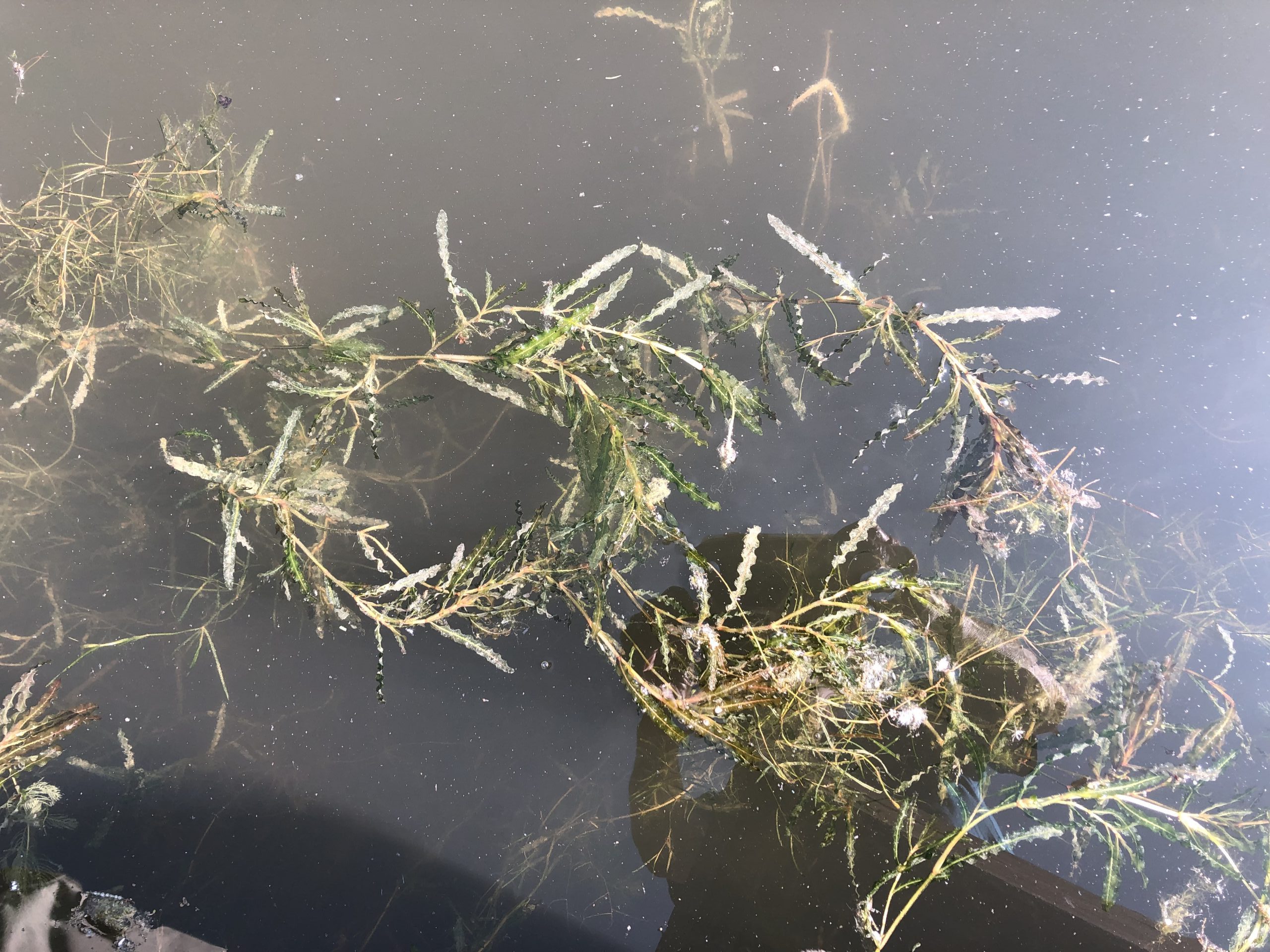
Why do nutrients like fertilizer cause weeds and algae to grow?
Just as a healthy diet of nutrient-rich food helps a child “grow like a weed,” nutrient-rich water helps weeds and algae grow… like weeds!

